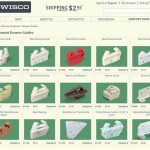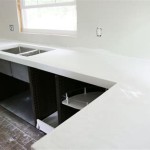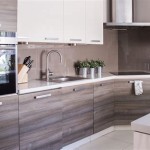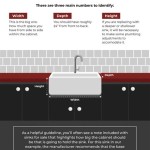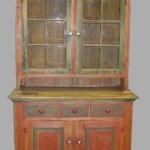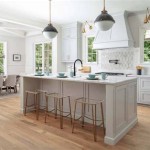What Is Best Paint For Kitchen Cabinets?
Selecting the optimal paint for kitchen cabinets is a multifaceted decision, demanding consideration of durability, aesthetic appeal, ease of application, and overall cost-effectiveness. Kitchen cabinets are subject to frequent use, exposure to moisture, grease, and varying temperatures. Therefore, choosing a paint that can withstand these conditions while maintaining its visual integrity is paramount. Several paint types are commonly used for kitchen cabinets, each possessing distinct advantages and disadvantages.
This article will delve into the prominent paint options for kitchen cabinets, examining their characteristics, application techniques, and suitability for different cabinet materials and kitchen environments. The aim is to provide comprehensive information that empowers individuals to make informed decisions about the best paint for their specific kitchen remodeling or renovation project.
Understanding the Key Considerations
Before evaluating specific paint types, it's crucial to understand the key characteristics that define a high-performing paint for kitchen cabinets. These include:
*Durability and Resistance:
The paint must be resistant to scratches, chips, and stains. Kitchen cabinets endure considerable wear and tear, so a durable finish is essential for longevity and maintaining a pristine appearance. *Washability and Cleanability:
Kitchens are prone to spills and splatters. The paint should be easily washable and cleanable, allowing for effortless removal of grease, food stains, and other common kitchen messes. *Adhesion:
Proper adhesion is vital, particularly for cabinets with pre-existing finishes. The paint should bond strongly to the cabinet surface to prevent peeling or flaking. *Finish:
The paint's finish (e.g., matte, satin, semi-gloss, gloss) affects both the aesthetic and functional properties of the cabinets. Glossier finishes are generally more durable and easier to clean, while matte finishes offer a softer, less reflective look. *Application Properties:
The paint should be easy to apply, whether using a brush, roller, or sprayer. Proper leveling and minimal brushstrokes are desired for a professional-looking finish. *VOC Content:
Volatile Organic Compounds (VOCs) are emitted by some paints and can be harmful to both the environment and human health. Low-VOC or zero-VOC paints are preferable for improved air quality. *Color Retention:
The paint should maintain its color over time, resisting fading or yellowing due to exposure to light and heat.Popular Paint Types for Kitchen Cabinets
Several paint types are frequently employed for kitchen cabinet projects. Each offers a unique set of characteristics and performance attributes.
*Alkyd Paint:
Alkyd paint, also known as oil-based paint, has been a traditional choice for cabinetry due to its durability and hard-wearing finish. It provides excellent resistance to scratches, chips, and stains, making it suitable for high-traffic areas. Alkyd paints also offer superior leveling properties, resulting in a smooth, even finish. However, alkyd paints typically have higher VOC content compared to other options, and they require mineral spirits or paint thinner for cleanup. They also tend to yellow over time, particularly in areas with limited natural light. Furthermore, the drying time for alkyd paint is significantly longer than for latex or acrylic paints, often requiring 24 hours or more between coats. *Latex Paint:
Latex paint is a water-based option that has become increasingly popular for kitchen cabinets. It offers several advantages, including low VOC content, easy cleanup with soap and water, and fast drying times. Latex paints are also readily available in a wide range of colors and finishes. However, traditional latex paints may not be as durable or resistant to scratches and chips as alkyd paints. To overcome this limitation, acrylic-modified latex paints or enamel formulations are often recommended for kitchen cabinets. These paints offer improved durability and adhesion, making them a viable alternative to alkyd paints. *Acrylic Paint:
Acrylic paint is another water-based option, known for its excellent adhesion, durability, and color retention. It's highly resistant to cracking, peeling, and fading, making it a good choice for cabinets that are exposed to frequent temperature changes or moisture. Acrylic paints also offer good washability and cleanability. Similar to latex paints, acrylic paints have low VOC content and are easy to clean up with soap and water. They also dry relatively quickly. Acrylic paints are available in various sheens and are often formulated specifically for cabinetry and trim. *Acrylic Enamel Paint:
Acrylic enamel paints combine the benefits of acrylic paints with the hard, durable finish of traditional enamels. These paints are designed to resist scratches, chips, and stains, making them ideal for kitchen cabinets. They offer excellent adhesion, washability, and color retention. Acrylic enamel paints are also available in a range of sheens, from matte to high gloss, allowing for customization of the cabinet's appearance. They are typically low in VOCs and easy to clean up with soap and water. *Chalk Paint:
Chalk paint has gained popularity for its matte finish and ease of application. It adheres well to most surfaces without the need for extensive priming or sanding. Chalk paint is typically a good option for creating a distressed or vintage look on kitchen cabinets. However, chalk paint is not as durable or washable as other paint options and requires a protective topcoat of wax or sealant. This topcoat adds some durability but still doesn't match the resilience of acrylic enamel or alkyd paints. Using chalk paint on kitchen cabinets requires more maintenance. *Milk Paint:
Milk paint is an eco-friendly option made from natural ingredients, such as milk protein, lime, and pigments. It provides a matte finish and a unique, slightly textured appearance. Milk paint is known for its excellent adhesion and breathability. However, it can be more difficult to apply than other paint types, as it requires careful mixing and application techniques. Milk paint also requires a protective topcoat to enhance its durability and washability. Like chalk paint, maintainaince is much higher. *Epoxy Paint:
Epoxy paint is a two-part coating system known for its exceptional durability and resistance to chemicals, abrasion, and moisture. It provides a hard, glossy finish that can withstand heavy use and harsh cleaning agents. Epoxy paint is often used in commercial kitchens and industrial settings due to its superior performance. However, epoxy paint has a strong odor and requires careful application to avoid runs and drips. It's also more expensive than other paint options.Preparation and Application Techniques
Regardless of the paint type chosen, proper preparation and application techniques are essential for achieving a professional-looking finish on kitchen cabinets. The following steps are generally recommended:
*Surface Preparation:
Thoroughly clean the cabinets with a degreasing cleaner to remove any dirt, grease, or grime. Rinse well and allow the cabinets to dry completely. Remove any hardware, such as knobs, pulls, and hinges. *Sanding:
Sand the cabinet surfaces lightly with fine-grit sandpaper to create a smooth, even surface and to improve adhesion. If the cabinets have a glossy finish, sanding is particularly important. For pre-existing painted cabinets, lightly sand the surface to create a "tooth" for the new paint to grip. *Priming:
Apply a primer specifically designed for kitchen cabinets. Primer helps to seal the surface, block stains, and improve adhesion. Choose a primer that is compatible with the paint type you plan to use. For cabinets with knots, use a stain-blocking primer to prevent the knots from bleeding through the paint. *Painting:
Apply the paint in thin, even coats, using a high-quality brush, roller, or sprayer. For a brush or roller, use smooth, overlapping strokes, following the grain of the wood. For a sprayer, maintain a consistent distance and angle to achieve a uniform finish. Allow each coat to dry completely before applying the next coat. Typically, two coats of paint are recommended for optimal coverage and durability. *Sanding Between Coats:
Lightly sand between coats of paint with fine-grit sandpaper to remove any imperfections and create a smooth surface for the next coat. *Topcoat (Optional):
For added durability and protection, consider applying a clear topcoat over the painted cabinets. Choose a topcoat that is compatible with the paint type you used. *Reassembly:
Once the paint is completely dry, reattach the hardware and reinstall the cabinets.Factors Influencing Paint Selection
Several factors can influence the optimal paint choice for kitchen cabinets. These include:
*Cabinet Material:
The material of the cabinets (e.g., wood, laminate, metal) can affect the paint's adhesion and durability. Some paints are better suited for certain materials than others. Wood cabinets generally accept a wide range of paint types, while laminate or metal cabinets may require a specialized primer to ensure proper adhesion. *Existing Finish:
The existing finish on the cabinets can also influence the paint selection. If the cabinets have a glossy finish, sanding and priming are essential to ensure proper adhesion. If the cabinets are stained, a stain-blocking primer may be necessary to prevent the stain from bleeding through the paint. *Kitchen Environment:
The kitchen environment, including humidity levels and exposure to grease and moisture, can affect the paint's durability and longevity. In kitchens with high humidity, paints with good moisture resistance are recommended. *Budget:
The cost of different paint types can vary considerably. Consider your budget when making your paint selection. Alkyd paints and epoxy paints are generally more expensive than latex or acrylic paints. *Desired Aesthetic:
The desired aesthetic of the kitchen (e.g., modern, traditional, rustic) can influence the paint color, finish, and application techniques. Lighter colors can make the kitchen appear brighter and more spacious, while darker colors can create a more dramatic and sophisticated look. A matte finish is often preferred for a more traditional or rustic look, while a glossy finish is often preferred for a more modern or contemporary look.By carefully considering these factors and evaluating the characteristics of different paint types, individuals can make an informed decision about the best paint for their kitchen cabinets, resulting in a beautiful, durable, and long-lasting finish.

Best Paint Color For Kitchen Cabinets

Best Paint For Your Next Cabinet Project The Home Depot

Best Paint For Kitchen Cabinets Solved Bob Vila

How To Paint Kitchen Cabinets In 7 Simple Steps

Cabinet Paint Explained The Best For Cabinets Arinsolangeathome

How To Paint Kitchen Cabinets Best Color Ideas Cost

Pro Tips For Painting Cabinets In Your Home Paintzen

The Best White Paint For Kitchen Cabinets Color Concierge

What Is The Best Paint For Kitchen Cabinets Heritage Custom Painting

The Best Kitchen Cabinet Paint Brand Honest Review
Related Posts


